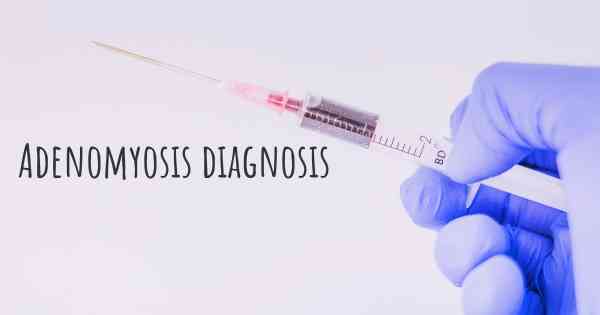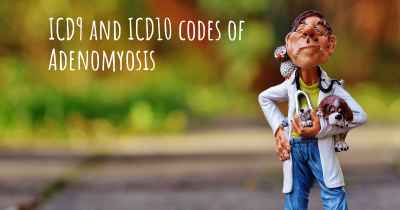How is Adenomyosis diagnosed?
See how Adenomyosis is diagnosed. Which specialists are essential to meet, what tests are needed and other useful information for the diagnosis of Adenomyosis

How is Adenomyosis Diagnosed?
Adenomyosis is a medical condition that affects the uterus, specifically the endometrium (the inner lining of the uterus). It occurs when the endometrial tissue grows into the muscular wall of the uterus, causing various symptoms such as heavy or prolonged menstrual bleeding, severe menstrual cramps, and pelvic pain. Diagnosing adenomyosis can be challenging as its symptoms can be similar to other gynecological conditions. However, there are several methods that healthcare professionals use to accurately diagnose this condition.
Medical History and Physical Examination
The first step in diagnosing adenomyosis is a thorough medical history and physical examination. Your healthcare provider will ask you about your symptoms, menstrual cycle patterns, and any previous gynecological conditions or surgeries. They will also perform a pelvic examination to check for any abnormalities in the uterus, such as an enlarged or tender uterus.
Transvaginal Ultrasound
A transvaginal ultrasound is a commonly used imaging technique to diagnose adenomyosis. During this procedure, a small ultrasound probe is inserted into the vagina to obtain detailed images of the uterus. The ultrasound can help identify changes in the thickness and texture of the uterine walls, as well as the presence of uterine fibroids or cysts. However, it is important to note that adenomyosis can sometimes be difficult to distinguish from other conditions using ultrasound alone.
Magnetic Resonance Imaging (MRI)
Magnetic resonance imaging (MRI) is another imaging technique that can provide more detailed information about the uterus and help diagnose adenomyosis. An MRI uses powerful magnets and radio waves to create detailed images of the internal structures of the body. It can accurately identify the presence of adenomyosis and differentiate it from other conditions. MRI is particularly useful when ultrasound results are inconclusive or when additional information is needed.
Hysteroscopy
Hysteroscopy is a minimally invasive procedure that allows direct visualization of the inside of the uterus. It involves inserting a thin, lighted tube called a hysteroscope through the vagina and cervix into the uterus. This procedure can help identify any abnormalities in the uterine cavity, such as the presence of adenomyosis or other conditions. During a hysteroscopy, your healthcare provider may also take a small tissue sample (biopsy) for further examination.
Biopsy
A biopsy involves taking a small sample of tissue from the uterus for laboratory analysis. It can be done during a hysteroscopy or as a separate procedure. The tissue sample is examined under a microscope to confirm the presence of adenomyosis and rule out other conditions with similar symptoms. Biopsy is often recommended when other diagnostic methods are inconclusive or when there is a need for a definitive diagnosis.
Other Diagnostic Methods
In some cases, additional diagnostic methods may be used to confirm or rule out adenomyosis. These may include endometrial sampling, where a small sample of the endometrial tissue is collected and examined, or blood tests to check for hormonal imbalances or other underlying conditions.
Conclusion
Diagnosing adenomyosis requires a combination of medical history, physical examination, and various diagnostic tests. While transvaginal ultrasound and MRI are commonly used imaging techniques, hysteroscopy and biopsy provide more definitive results. It is important to consult with a healthcare professional if you experience symptoms suggestive of adenomyosis, as early diagnosis can lead to appropriate management and treatment.
Posted Mar 20, 2017 by Kate 1000
Posted Sep 10, 2017 by Marissa 2010
Posted Oct 29, 2017 by Nicola 300








